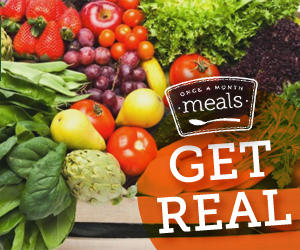**This post is part of the Get Real series. Please remember that this is meant as a learning community. We know that many of you are passionate about what you do and we want you to express that, just please do so in a way that will be an encouragement and aid to others making a transition. We want this to be a “safe space” for participants to learn. For that reason, we reserve the right to delete any comments that are not handled in this manner.
This month Get Real is all about beans, rice, and grains and why you should consider incorporating them into your diet. We will be diving deeper, especially into beans, with our blog partner for the month, Katie of Kitchen Stewardship. During the last two weeks of November, she will discuss beans of all kinds and how to soak and store them. For now, let’s just touch a little on the basics.
Beans
Compared to grains, beans supply 2 to 4 times as much protein and are a rich source of fiber, scrubbing out your digestive tract of excess cholesterol. One cup of beans can supply as much as 12 grams of fiber, which is half the recommended daily dose of 21 to 25 grams per day for adult women (30 to 38 grams for adult men). Some studies show that because of their high antioxidant and fiber content, a diet rich in beans can help prevent cancer.
Like whole grains, most beans are best consumed after they have been soaked overnight or longer (in water, soured/clabbered milk, or whey) then prepared. Soaking removes the indigestible complex sugars (oligosaccharides) from the outer coating of the beans and also helps to reduce the amount of phytic acid in beans, which binds to minerals such as zinc, copper, calcium, magnesium, and iron and can leach them from your body. Soaking also allows shorter cooking times. This preserves more nutrients, giving you the benefits of all the proteins, vitamins, and minerals. More on beans later this month!
Rice
Rice is a grain and the staple food of two-thirds of the world’s population. Since it is high in carbohydrates, it is a quick source of energy and is fairly quickly and easily digested. Rice is gluten-free and non-allergenic. However, there are big differences in rice varieties, namely brown (whole grain) and white rice. Next week we will explore a few different kinds of rice and their differences.
Whole Grains
Like beans, most grains should be soaked for best nutrition and digestion. All grains contain phytic acid (an organic acid in which phosphorus is bound) in the outer layer or bran. Untreated phytic acid can combine with calcium, magnesium, copper, iron, and zinc in the intestinal tract and block their absorption, leading to serious mineral deficiencies and bone loss. Soaking the grains allows enzymes, lactobacilli, and other helpful organisms to break down and neutralize phytic acid.
Grains fall into two general categories: those containing gluten (such as oats, rye, barley, and wheat) and those that do not (such as buckwheat, rice, and millet.*) Some other grains include spelt, kamut, teff, quinoa (though not technically a grain, but the fruit of the Chenopodium family), amaranth, buckwheat (also not technically a grain, but the seed of an herb, relative to rhubarb), and corn. Grains vary in their nutritional value and are all useful in various ways, but as you read labels at the grocery store, be sure to look for the words “whole grain” in your products. Advertisers are good at confusing us with terminology like “multigrain,” “100% wheat,” “cracked wheat,” “bran,” and “stone ground”. “Whole grain” indicates the best benefit nutritionally. A whole grain contains all edible parts of the grain, including the bran, germ, and endosperm. The whole grain may be used intact or recombined, as long as all components are present in natural proportions.
Do you have questions about beans, rice, or grains? Let us know in the comments, and we will do our best to help you out!
Sources:
http://www.webmd.com/food-recipes/features/reap-the-benefits-of-whole-grains
November Week 1 Action Item:
- How can you incorporate these whole foods into your diet, if you do not already? Use one recipe this week that includes one of these foods. Choose one that you do not normally use!
- Read your labels! Search for whole grains in the list of ingredients!
November Get Real:
Please take a moment to thank our guest authors by clicking over to their sites and/or liking them on Facebook and/or Twitter.
Sponsor: Once A Month Meals